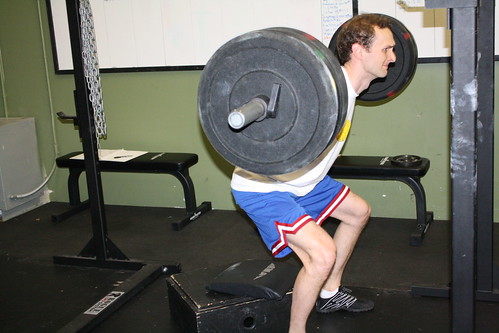For many normal gym goers, squatting isn’t in their repertoire. ?Usually the ones that do squat either go above parallel or just to parallel. ?For some reason, someone back in the day decided to spread a rumor that squatting below parallel was bad for your knees. ?It is unknown who started this garbage, and it is really a shame, because squatting above parallel is the cause of many cases of tendonitis and in high impact sports a case can be made for patellar tendon ruptures and ACL tears. ?In his book ‘Starting Strength,’ by Mark Rippetoe he goes into detail of why squatting below parallel is important. ?Since nobody can quite tell it like Coach Rippetoe here is a quote from his book:
‘In a partial squat, which fails to provide a full stretch for the hamstrings, most of the force against the tibia is upward and forward, from the quardirceps and their attachment to the front of the tibia below the knee. This produces an anterior shear, a forward-directed sliding force, on the knee, with the tiba being pulled forward from the patellar tendon and without a balancing pull from the opposing hamstrings. This shearing force–and the resulting unbalanced strain on the prepatellar area–may be the biggest problem with partial squats. Many spectacular cases of tendinitis have been produced this way, with ‘squats’ getting the blame.’
At CFB we squat below parallel on purpose. ?It is critical to get the hamstrings and glutes involved in the action. ?We also use a box for this reason. ?I have fixed many knee problems by teaching people to squat correctly and below parallel. ?How deep did you squat before coming to CrossFit Bartlett? ?Post comments below!
Elliot on his way back up from the box. ?Click here to check out more pics on Flickr!


